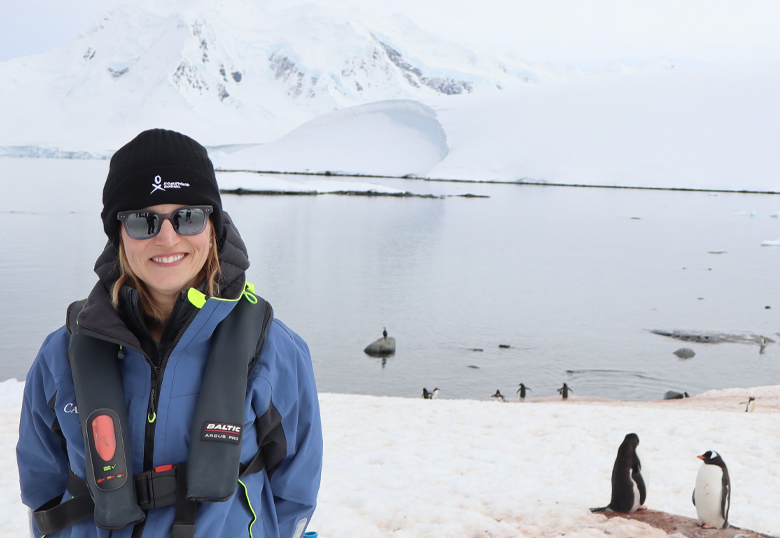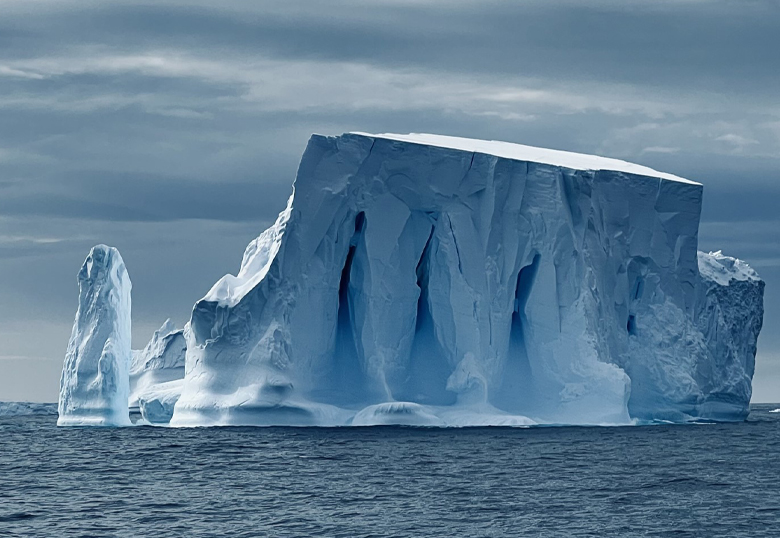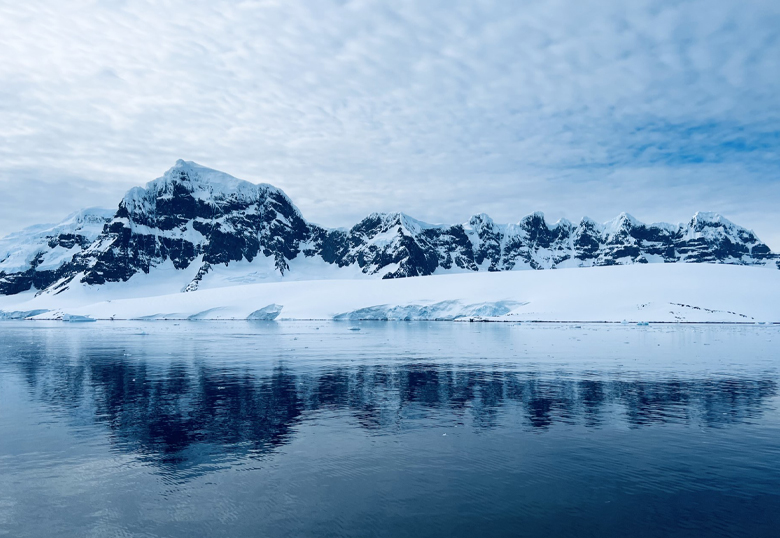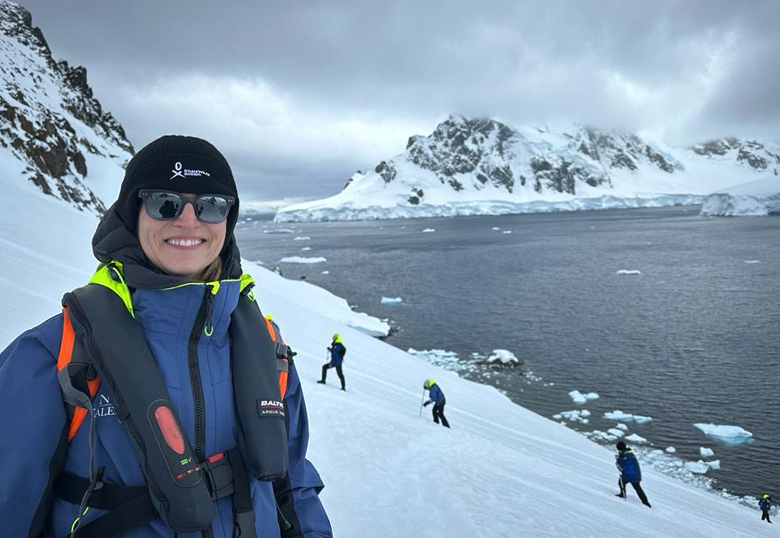Dr. Jennifer Copeland did her homework, and then some, before embarking on her 19-night tour of Antarctica as part of the Homeward Bound global leadership initiative for women with a background in science, technology, engineering, mathematics and medicine (STEMM). And yet no amount of preparation could rival the experience of interacting with the beauty and remoteness that is the world’s fifth-largest and least-populated continent.

“It’s every bit as astonishing and awe-inspiring as everyone says it is yet it’s also hard to describe,” says Copeland, who set sail from Argentina in early November. “It’s stunningly beautiful and so remote and pristine. It’s very interesting to be in such an untouched place, and while I know we were touching it, it just has this feeling of complete isolation.”
That sense of isolation is achieved thanks to an international collaboration and treaty that sees Antarctica as an unowned land, open to science and discovery and closely and collectively monitored by protocols that visiting parties agree to follow. It was the perfect stage for a program focused on leadership and sustainability.

“The international collaboration was an incredibly impactful experience,” says Copeland, who was part of 108 women and non-binary people representing 29 countries aboard the Island Sky for Antarctica. “The protocols we follow are voluntary, arguably, so to see up close that we can actually collaborate, get along and make this work was really inspiring and a little bit hopeful that if we can do this, surely we can get together to figure some other things out too. That’s probably a bit idealistic but it can be done.”
Sustainability is a very broad topic and for the women on board, it meant different things given their differing backgrounds. While Copeland’s work as a kinesiologist had her approaching sustainability from a human health perspective, there were shipmates whose backgrounds included engineering, environmental science, government and non-governmental organizations, among others.

“While this was not about climate change specifically, it was a very central topic because it’s so evident down there how rapidly the changes are happening,” says Copeland, whose tour operators pointed out areas of moss growth on shore where once there was just snow and ice, or recounted recent rainfalls recorded for the first time in the continent’s history. “More than anything, many of our conversations focused on a different model of leadership that is more collaborative, more transformative and based on values and a legacy. It was sort of an idealistic view of what leadership could look like and what leadership probably needs to look like if we are going to save the world.”
She says her fellow health researchers spoke at length about the loss of biodiversity in the world and how leadership can spur individual behavioural changes on a mass scale.
“Me walking to work every day is not going to solve the problem, even though that’s something I do,” she says. “If we’re able to get people to spend more time outside, people will notice more about their environment and care more. Sustainability is big and broad and hard to wrap your head around sometimes, but you can distill it down into your daily actions and how you interact with the planet. So, how can we get people to notice — and to care?”

In the coming months, Copeland will share her experiences in several forums and is open to addressing school classrooms or whomever has interest. She promises spectacular photography, stories about the many seals, whales and six varieties of penguins she saw, and a message about the future of our planet that is at times scary, but also hopeful that there are enough caring and committed people throughout the world eager to lead a culture of change.
“Education and research, broadly, are the answers to a lot of these problems,” she says. “Taking the things I’ve learned and using them in a way that teaches people about this complex environment and how we can individually contribute to change is one of my goals from this experience.”
